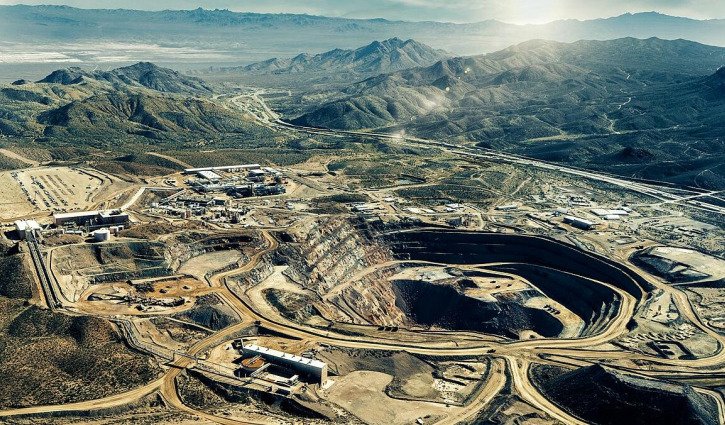The global mineral exploration industry finds itself at an inflection point that will define the next decade of resource security and economic competitiveness. Traditional exploration methods are failing to meet the escalating demand for critical minerals essential to renewable energy, defence systems, and advanced manufacturing.
Discovery rates for high-grade deposits have been declining steadily over the past decades, whilst exploration costs continue to spiral upward.
Against this backdrop, artificial intelligence has emerged as the industry's most promising technological lifeline - yet greenfield mineral deposit discovery rates remain unchanged despite billions in AI investment.
The disconnect between AI's theoretical potential and practical deployment reveals fundamental challenges that could determine which nations and companies dominate tomorrow's critical mineral supply chains.
Billion-dollar promise
The numbers tell a compelling story about AI's market penetration in mineral exploration.
By 2025, industry analysts project that over 60% of mineral exploration projects will incorporate AI-driven predictive modelling for resource identification.
Machine learning adoption rates vary significantly across applications:
- Remote sensing data analysis: 70% adoption by 2025
- Predictive mineral targeting: 65% adoption by 2025
- Machine learning geological mapping: 60% adoption by 2025
- Autonomous robotic exploration: 50% adoption by 2025
These technologies promise to revolutionise how exploration companies process vast datasets encompassing geochemical assays, satellite imagery, magnetic surveys, and historical drilling records.
AI algorithms automatically classify and interpret complex imagery, identifying surface anomalies and alteration patterns that indicate subsurface mineralisation across previously inaccessible terrains.
Real-world wins: AI delivers
Despite skepticism, several high-profile successes demonstrate AI's transformative potential when properly implemented.
The Jundy mine case study stands out as validation of machine learning techniques applied to challenging orogenic gold deposits.
Facing a deposit with a 40% nugget factor - meaning nearly half of the gold distribution follows random rather than predictable patterns - traditional exploration methods struggle with efficiency.
The AI-driven exploration programme delivered a 24% improvement in efficiency in locating high-grade targets, demonstrating tangible ROI in one of geology's most challenging environments.
Similarly, a copper porphyry operation achieved a 37% reduction in resource conversion drilling costs using AI-generated probability maps to optimise drill hole placement.
These successes highlight AI's capacity to identify subtle patterns invisible to traditional analyses whilst dramatically reducing exploration risks and costs.
Reality check
Yet beneath these success stories lies a more complex reality that explains why discovery rates haven't improved despite widespread AI adoption.
Data quality
Challenges such as low data quality outside existing mines, inconsistent sampling protocols, and limited interdisciplinary collaboration create fundamental barriers to AI effectiveness.
Unlike consumer applications where data flows consistently, mineral exploration operates with incomplete, noisy datasets collected across decades using varying methodologies.
Exploration datasets are incomplete, noisy, or inconsistently collected, posing significant challenges to AI model development and deployment.
The industry struggles with digitizing historical records and harmonizing data from multiple sources with different collection standards and formats.
Additional work has to be done to solve problems with data integration, data quality, and harmonization across geochemical, geophysical, hyperspectral, and field survey datasets.
Gaps in skills, infrastructure
One of the main challenges facing the mining sector in exploiting AI's potential involves addressing acute skills shortages.
Most exploration professionals lack the technical background to effectively deploy machine learning tools, whilst data scientists often lack the geological expertise to interpret results meaningfully.
Overcoming scepticism within the industry also poses notable challenges, with stakeholders hesitant to embrace AI-driven approaches over established methodologies.
The integration of machine learning with existing exploration workflows requires fundamental organisational changes that many companies resist.
Mining operations often generate vast amounts of data, but remote locations often lack the infrastructure necessary to support advanced AI technologies.
Underground operations face additional challenges, with sensors requiring resistance to blasting damage whilst data transmission suffers from limited bandwidth in communication networks.
Connectivity issues still remain in deep mine sites too, creating bottlenecks that constrain real-time AI applications.
And AI-driven mineral prospectivity mapping faces several challenges, including difficult interpretability, poor generalisability, and physical inconsistencies.
Its LLM algorithms can inherit biases from their training data, potentially leading to inaccurate or misleading predictions that compound exploration risks.
The "black box" nature of many AI models creates validation challenges for geologists who need to understand the prediction rationale, before committing significant exploration capital.
AI has also been limited by small datasets, with cost forecasting applications typically based on relatively few data points.
Given that critical mineral exploration remains relatively new and with limited historical precedents, the lack of comprehensive databases for training and testing AI models presents ongoing challenges.



